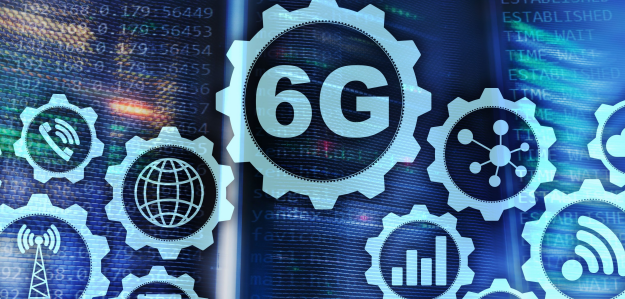How will 6G change the workplace?

How will 6G change the workplace?

The next generation of connectivity is coming, promising lightning-fast speeds that will change the way people use their devices. However, the innovation of 6G is not just about speed. The next generation of technology will go far beyond the capabilities of 5G, opening the door to a multitude of use cases that are unimaginable today.
In the business world, 6G will change the game in the Metaverse, enabling holographic meetings without the need for headphones. More broadly, 6G has implications for the industrial environment, where it will greatly increase the productivity of factories, allowing machines to be used even when workers are not on site.
It's still early, but the potential of 6G is so great that Nokia's CEO Pekka Lundmark predicts the technology could make smartphones obsolete. When 6G arrives in 2030, "smartphones as we know them today won't be the most common interface," Lundmark said, adding that "many of these things will be built directly into our bodies."
Although 6G is still in the early stages of research and standards have yet to be developed, the possibilities of this technology are certainly exciting.
What will ubiquitous 6G look like?
5G, the current generation of cellular technology, offers higher bandwidth and lower latency, enabling use cases including the massive Internet of Things (IoT) and virtual reality (VR). When 6G finally rolls out, it's expected to be 100 times faster than 5G, at around 1,000 Gbit/s.
Nokia's 2021 white paper, "Extreme Massive MIMO for Macro Cellular Capacity Boost in 5G-advanced and 6G," details how the mid-spectrum bands that carry 6G networks will provide about 20 times more capacity than the 5G 3.5GHz band.
Beyond speed, 6G will be "a fully integrated system that allows instant communication between devices, consumers and the surrounding environment," says futurist Bernard Marr. He added that 6G-enabled enterprise technologies will "change the way companies process information, communicate, make decisions and train their employees."
With this in mind, use cases for 6G include holographic transmission -- described by Microsoft as "a 3D capture technology that allows real-time reconstruction, compression and transmission of high-quality 3D models of people anywhere in the world" -- and large-scale digital twin technology. This could reshape the way people interact with each other at work, said Sylwia Kechiche, principal enterprise analyst at Ookla.
She paints a picture of a meeting in a virtual space, using numbers to represent people and related things. "This immersive work enables optimal levels of efficiency and productivity; a multitude of sensors will be constantly sending information and combining it with contextual data," she envisions. "Analysis can then be done in real-time while looking at past events to help resolve the problem by recommending the best course of action."
Jessica Ellis, head of applied 5G at Deloitte, said the online experience should get even more powerful with the rollout of 6G. She gave the example of the metaverse. “With such extended reality, users can imagine walking virtual streets, witnessing lifelike people, entering well-known businesses, and engaging in interactive experiences. These advancements will blur the line between virtual and reality to a degree that we cannot yet Totally understand."
As 6G spreads, the business world and the way we work, meet and network will begin to change. Ellis added that online meetings can see full moving holograms of the other person being teleported into the room.
Instead of spending hours in 2D zooms or team meetings, virtual characters will have "real" eye contact and express body language in real time, Marr said. "If we need to have a one-on-one meeting, we can simply switch all participants out and find a quiet virtual space to connect."
6G will have the ability to allow hundreds of millions of users to simultaneously access multiple different metadata in parallel. Meanwhile, futurist and Fast Future CEO Rohit Talwar said photorealistic 3D graphics will be available "almost instantly". "This means banking assistants will be able to see a customer's entire account history and address complex service issues and needs face-to-face within the Metaverse."
With the help of 6G, employee training will also evolve through immersive virtual reality and augmented reality (AR) experiences, Marr said.
Major upgrades between 5G and 6G
5G has enabled a range of use cases, including IoT applications in transportation, healthcare and agriculture. 6G will further support this, increasing productivity and efficiency – especially in industrial use cases.
In an industrial setting, 6G will leverage adaptive metamaterials to achieve nanosecond latency, including surfaces that can become part of a network, said David Lessing, director of network operations and research at ISG University.
Ellis said there may be more robots on factory production lines that will communicate with logistics and the entire supply chain. This reduces operating costs and saves time, and reduces environmental impact.
Derek Long, head of telecommunications and mobility at Cambridge Consulting, added that smart and autonomous machines enabled by 6G technology will reduce the need for manpower in industrial settings, enabling employees to work remotely. "As people move from the shop floor to the control room, the environment becomes safer," he told IT Pro. "The shop floor can be reconfigured because people won't be so invested, machines will be placed more closely together, and production lines will be designed around efficient flow."
The vision of a smart city, the integration of all public services, may also become a reality when 6G enters the fray. "Autonomous vehicles can scale—especially emergency service vehicles and logistics for long-distance travel—without the risk of exit," Ellis predicts.
At the same time, 6G will change the way you commute through real-time 4D maps to manage extreme traffic in future cities, including self-driving cars. "Your journey will improve with the help of high-precision sensors in the vehicle and base station that navigate and give you the fastest and most comfortable commute," explains Marr.
Marr went on to say that multiple verticals will benefit, but 6G in particular will revolutionize healthcare. “With lightning-fast data transfer speeds, we will have smart sensors floating in our bloodstream, monitoring and measuring every aspect of our health. These connected devices will continuously collect data and analyze information to make recommendations and predictions before health problems arise. ."
The scale of the forecast is huge, but the future of 6G isn't set in stone, and no one knows for sure what the technology will look like when it dominates around 2030. While 6G could open multiple doors for businesses and employees, reality may still be some way off. In fact, the rollout of 5G has been rather slow so far, and many of its use cases have yet to reach their full potential.